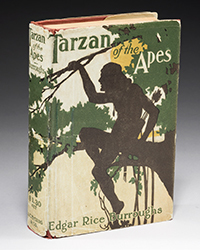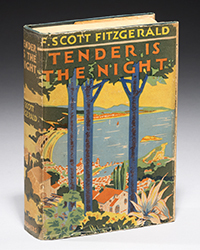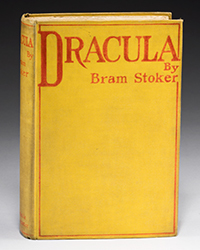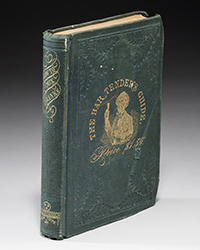The first time I caught a glimpse at the frontispiece of Thomas Anburey’s Travels through the Interior Parts of America… (London, 1789), it was love at first sight. Entitled “An Indian Warrior Entering his Wigwam with a Scalp”, the plate reminded me of the thousands of Western movies I watched as a kid. I was lucky enough to eventually find a copy of the most valued French edition (Paris, 1793). It is quite cheaper than the British one; probably because it is less rare, but also because it features 4 engravings only. The wonderful dollar plate printed in black and red is missing, for instance— but who cares, as long it features the Indian Warrior with a scalp?
Scalp Them High
Native Americans were not organized fighters, but they spread fear into the hearts of their enemies with their habit of scalping their victims. I have seen it in movies, read about it in books, but Anburey saw it with his own eyes: “Whenever they scalp, they seize the head of the disabled or dead enemy, and placing one of their feet on the neck, twist their left hand in the air, by which means they extend the skin that covers the top of the head, and with the other hand draw their scalping knife from their breast.” Doesn’t it sound just like a John Wayne movie? Well, it goes on like a Quentin Tarantino’s: “If the hair is so short, and they have no purchase with their hand, they stoop, and with their teeth strip it off.” I remember a character from one movie, who had survived the operation, and enjoyed considerable respect from his White peers anytime he’d take off his hat. Here again, Anburey’s relation is stronger than fiction. “We found two poor fellows who lay wounded, that had been scalped in a skirmish (...), and who are in a fair way of recovery. I have seen a person who had been scalped, and was as hearty as ever, but his hair never grew again.” But this wasn’t enough to make him feel comfortable about the whole affair: “Should I at any time be unfortunate enough to get wounded, and the Indians come across me, with the intention to scalp, it would be my wish to receive at once a coup de grace with their tomahawk, which in most instances they mercifully allow.”
Made-Up Tale
Thomas Anburey was a British soldier who went to America to fight the War of Independence with Burgoyne’s army—well, did he? Historians have fed on his book, but it looked suspicious from the start. Both The Monthly Review and The Critical Review frowned at a few passages at the time: “From a careful comparison we can pronounce this work, in its most essential parts; to be an ill-digested plagiarism from General Burgoyne’s Narrative, and from the Account of the Prosecution of Col. Henley.” But the lively details and the impressive list of 600 dignified subscribers inserted in the book (including General Burgoyne himself or the Earl of Balcares) gave it huge credit. It became so popular that it was soon translated into French and German. But in 1943, a scholar named Whitfield J. Bell endeavoured to list the borrowed parts in Anburey’s work. As he put it: “Half a dozen books and pamphlets, a pair of scissors, and a paste-pot (...) sufficed to make another book about America.”
In 2012, Ennis Duling from Castleton State College, published a thorough study (vermonthistory.org), underlining many disturbing facts. He writes: “Bell pointed to Burnaby, the Marquis de Chastellux, Peter Kalm, Jonathan Carver, Samuel Peters (...), citing more than sixty examples.” (Dulin). Not to mention Father Pierre de Charlevoix. “Anburey’s borrowings were wholesale,” Dulin adds, “this was not petty theft, but grand larceny.” Is Anburey’s narrative a complete forgery, then? Not necessarily as he most likely borrowed from others’ to make his own more interesting—what Whitfield J. Bell calls “combinations of personal and borrowed observation and reflection.” This is a crucial issue for historians, but a secondary one to an ordinary reader. Truth sometimes calls on fiction to be heard, and just like the engraving of the Indian Warrior, this relation is full of breath-taking descriptions of war. Anburey, whosoever he was, tells of the smell of dead bodies, of dead horses scattered by dozens all over the battlefield, of the unbearable cries of the wounded. This is not another boring description of military manoeuvres—each page smells powder, blood and fear. No wonder it has become a classic despite the controversy.
FRENCH VARIANT
The 1793 edition (Paris, chez La Vilette) is sometimes wrongfully introduced as the first French edition. Anburey’s narrative was actually first translated by one Lebas in 1790 (Paris, chez Briand). But it was poorly translated, unlike the 1793 edition, which is clearly superior. We own the latter, so the title page reads, to Mr. Noel from the famous Louis Legrand collège. I don’t know if publishers paid royalties to translate a book, but they hardly ever obtained the original wood plates for the engravings. They had to reproduce them, and that’s why most of them are inverted. Curiously, this is not the case here: our Indian Warrior is wearing his scalp in the same right hand. Whereas the English engraving is attributed to “Barlow”, the one from the 1793 edition is not signed. But it was faithfully duplicated, contrarily to the one coming with the Briand edition—on the latter, the whole background was removed, and the caption was reduced to “An Indian Warrior.” Trying to be closer to the original one (see introduction), the 1793 edition apparently mistook “entering” with “interring” in the caption, so that our Indian Warrior ended up burying his wigwam with a scalp—which doesn’t make any sense. But mistakes are few in this edition (except for the word “arms” being mistaken with “fire-arms”—instead of the body parts, in Letter XL)—that’s why this is the edition.
Anburey’s patriotic speeches were suspicious to the French who had supported the Americans during the War of Independence, and who had themselves recently overthrown their King in the name of freedom. The publisher walked on thin ice, and Mr. Noel’s notes are here to temper Anburey’s passionate speeches against the American ‘rebels’. Let’s bear in mind that this edition came out in 1793, when France was plagued by the political regime known as The Terror, the bloodiest period of the Revolution, during which a single word against the most radical principles could take you to the guillotine—which was as scary among the French as scalping was among the Americans. But this is taken from another “movie”...
T. Ehrengardt


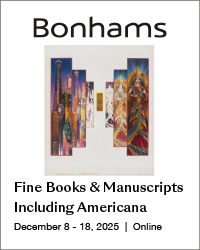

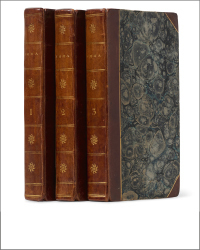
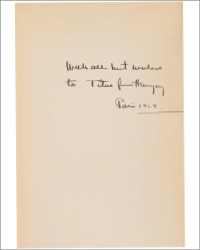
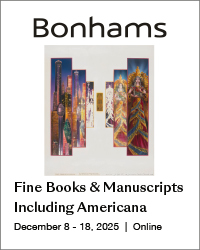
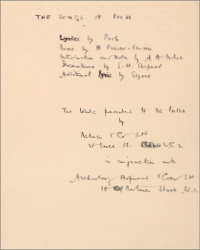

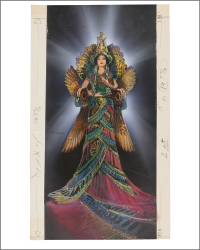
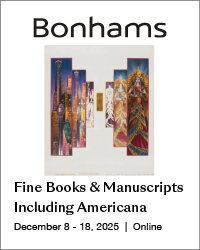
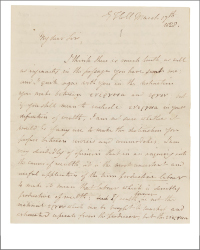
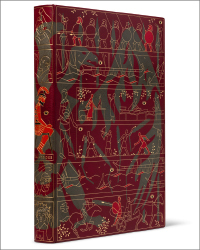
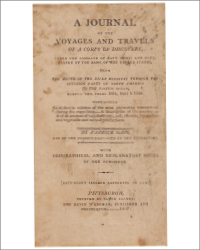
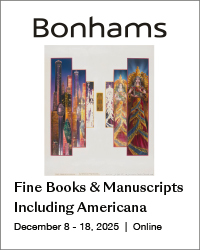
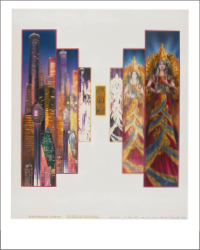
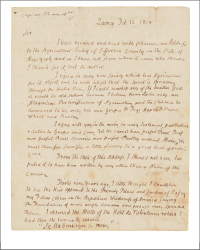

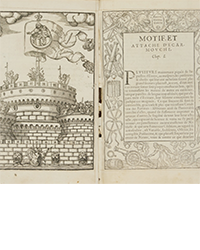
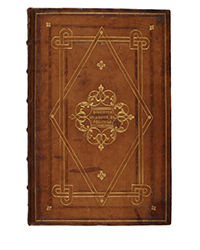
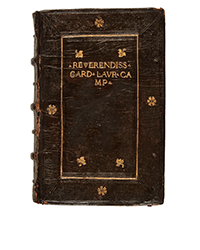
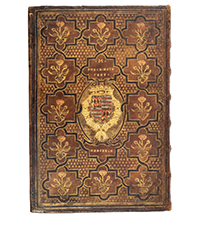
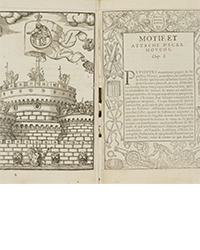
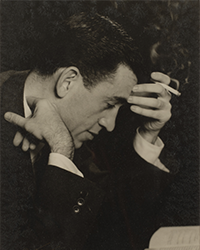
![<b>Sotheby’s, Dec. 16:</b> [Austen, Jane]. A handsome first edition of <i>Sense and Sensibility,</i> the author's first novel. $60,000 to $80,000. <b>Sotheby’s, Dec. 16:</b> [Austen, Jane]. A handsome first edition of <i>Sense and Sensibility,</i> the author's first novel. $60,000 to $80,000.](https://ae-files.s3.amazonaws.com/AdvertisementPhotos/9a74d9ff-42dd-46a1-8bb2-b636c4cec796.png)
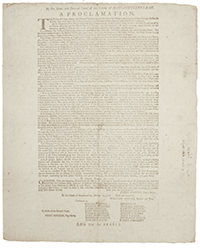
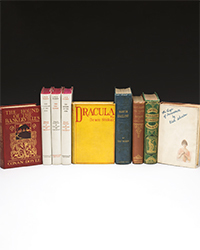
![<b>Heritage, Dec. 15:</b> John Donne. <i>Poems, By J. D. With Elegies on the Author's Death.</i> London: M[iles]. F[lesher]. for John Marriot, 1633. <b>Heritage, Dec. 15:</b> John Donne. <i>Poems, By J. D. With Elegies on the Author's Death.</i> London: M[iles]. F[lesher]. for John Marriot, 1633.](https://ae-files.s3.amazonaws.com/AdvertisementPhotos/8caddaea-4c1f-47a7-9455-62f53af36e3f.jpg)
